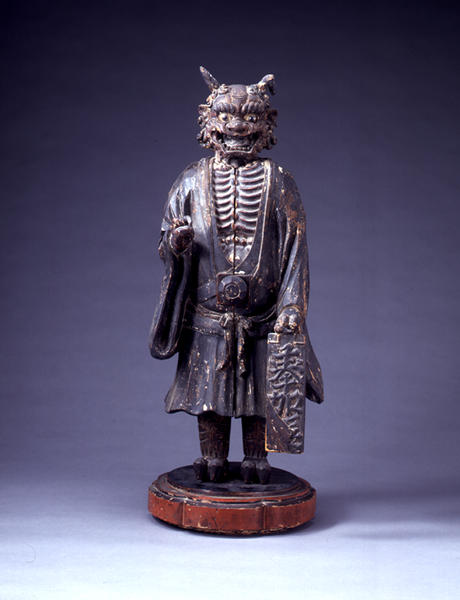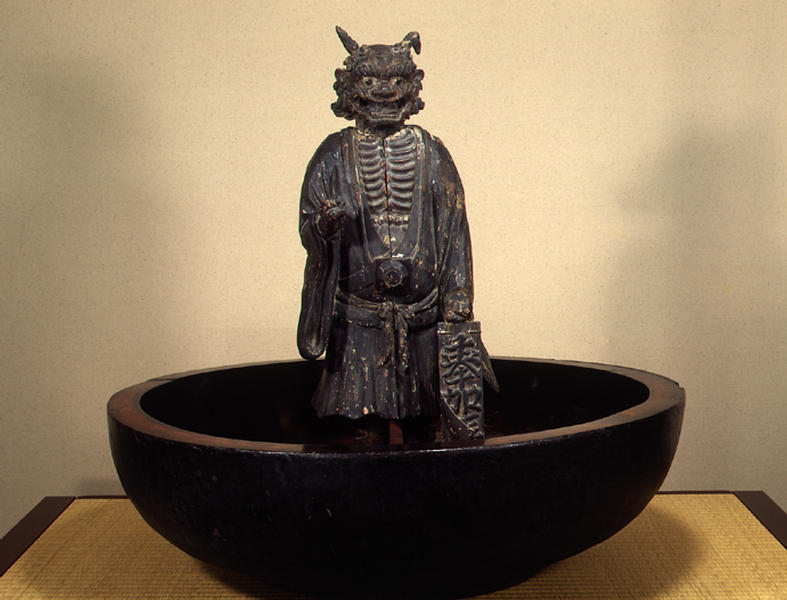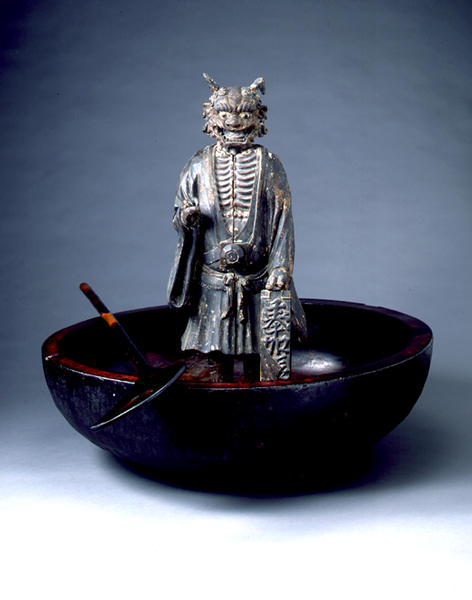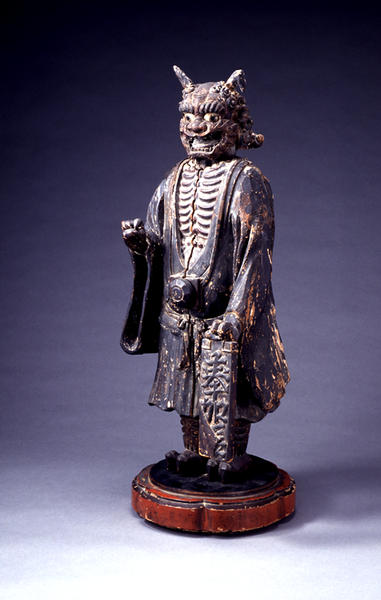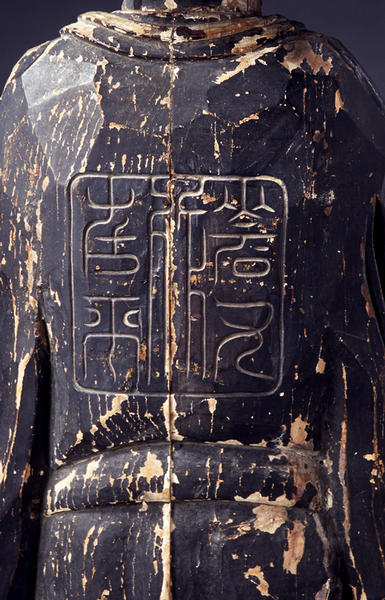鬼の念仏像
- 江戸時代
- 18-19c
- 木製黒漆
- H-87 W-37
解説(春の玉手箱)
大津絵の画題のひとつである「鬼の念仏」の姿を彫像にしたものである。大津絵は、近江国(滋賀県)大津の追分、三井寺周辺で売られていた往来の人々の手土産の民芸的絵画。はじめは仏画中心だったが、のちに藤娘、瓢箪鯰など戯画的なものとなった。「鬼の念仏」の伝承はこうである。
『大津の或る寺に貪欲な僧が住んでいた。寺の修繕と偽って寄付を募り私腹を肥すこの僧を懲らしめるためある男が一計を案じ、「地蔵菩薩の面を被って財を募ればたちどころに千金が集まる」と言って僧に鬼の面を被らせた。何も知らず勧進に出かけた先で、人々は驚き、瓦石を投げつけたため左の角は折れてしまった。ほうほうの体で寺に逃げ帰った僧はそれ以後姿を見せなかった。』
本像はその内容に従った姿だが、ユーモラスな中にも何とも言えぬ悲哀が漂っているところに、如何にも寓意的な意味合いの多い大津絵らしさを感じる。右手には鐘を鳴らす撥が握られていた。
Catalogue Entry
This is a sculpted image of the “Oni no Nembutsu" figure commonly found in Otsu‐e folk prints. Otsu‐e are folk prints and paintings that were sold by local residents as souvenirs around the Miidera area near Otsu in Shiga prefecture. At first these pictures commonly depicted Buddhist images, but gradually they shifted to more humorous topics such as Fujimusume or the Wisteria Maiden and catfish (said to be the cause of earthquakes). The story behind the Oni no Nembutsu, or literally the demon reciting sutras, can be summed up like this. “A greedy monk lived in a temple in Otsu. In order to chasten this monk who sought to line his own pockets when out soliciting donations to his temple, a man told him he should wear a Jizo mask, the god of compassion, while on his soliciting rounds and then he would collect a great amount of money. The man then put a demon mask on the monk and sent him out on his rounds. But little did the monk know that he was wearing a demon mask, and when he tried to beg for donations, the people were frightened and threw rocks and bricks at him. These attacks broke the left horn on the demon mask. The monk ran back huffing and puffing to the temple, and would never show his face again."
This image shows the form of the monk described in this story. There is a slight bit of pathos tingeing the humor here, and in this mixed symbolic meaning we can sense its resemblance to the often enigmatic Otsu‐e images. The figure holds a plectrum in his right hand, used to strike his begging bell
